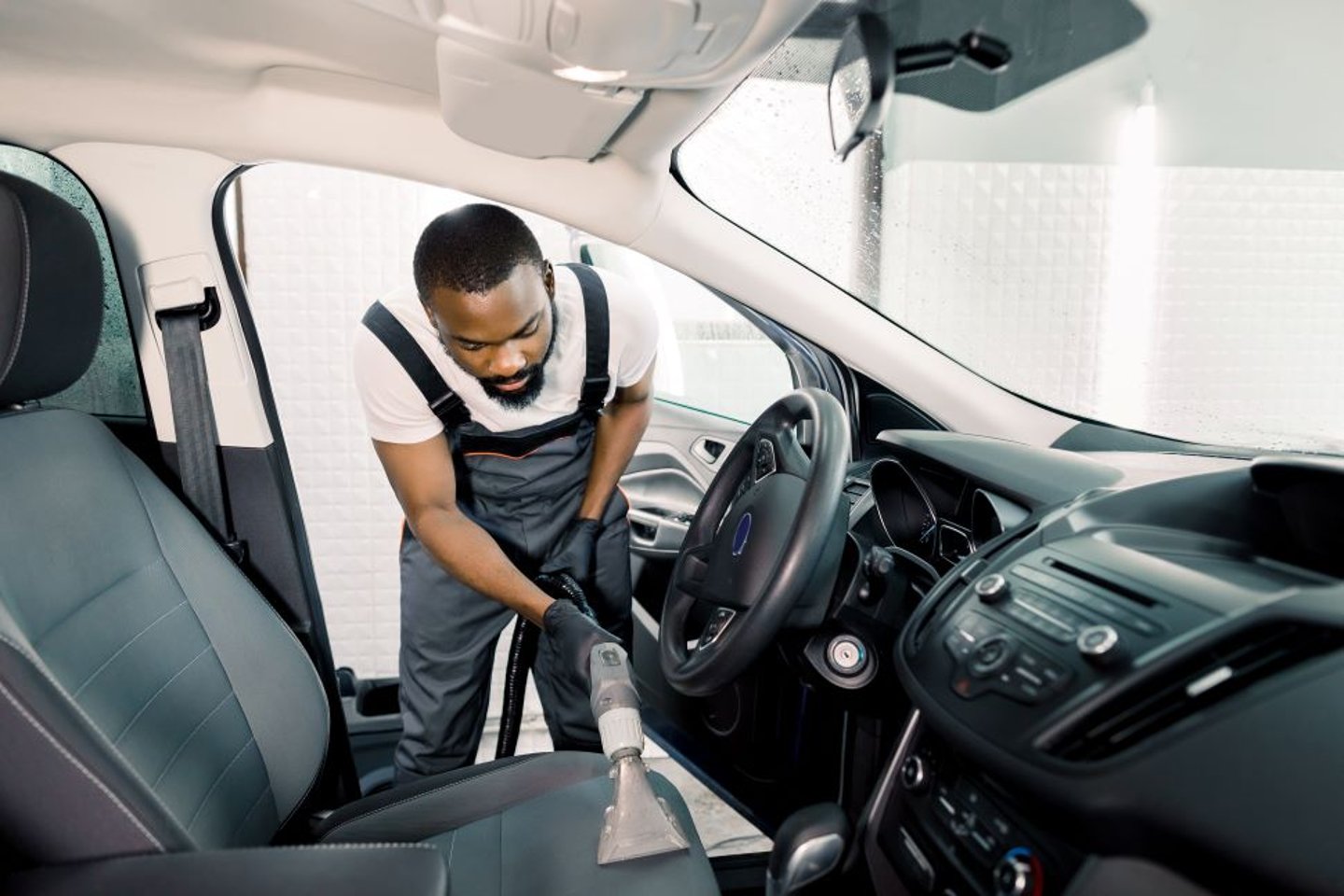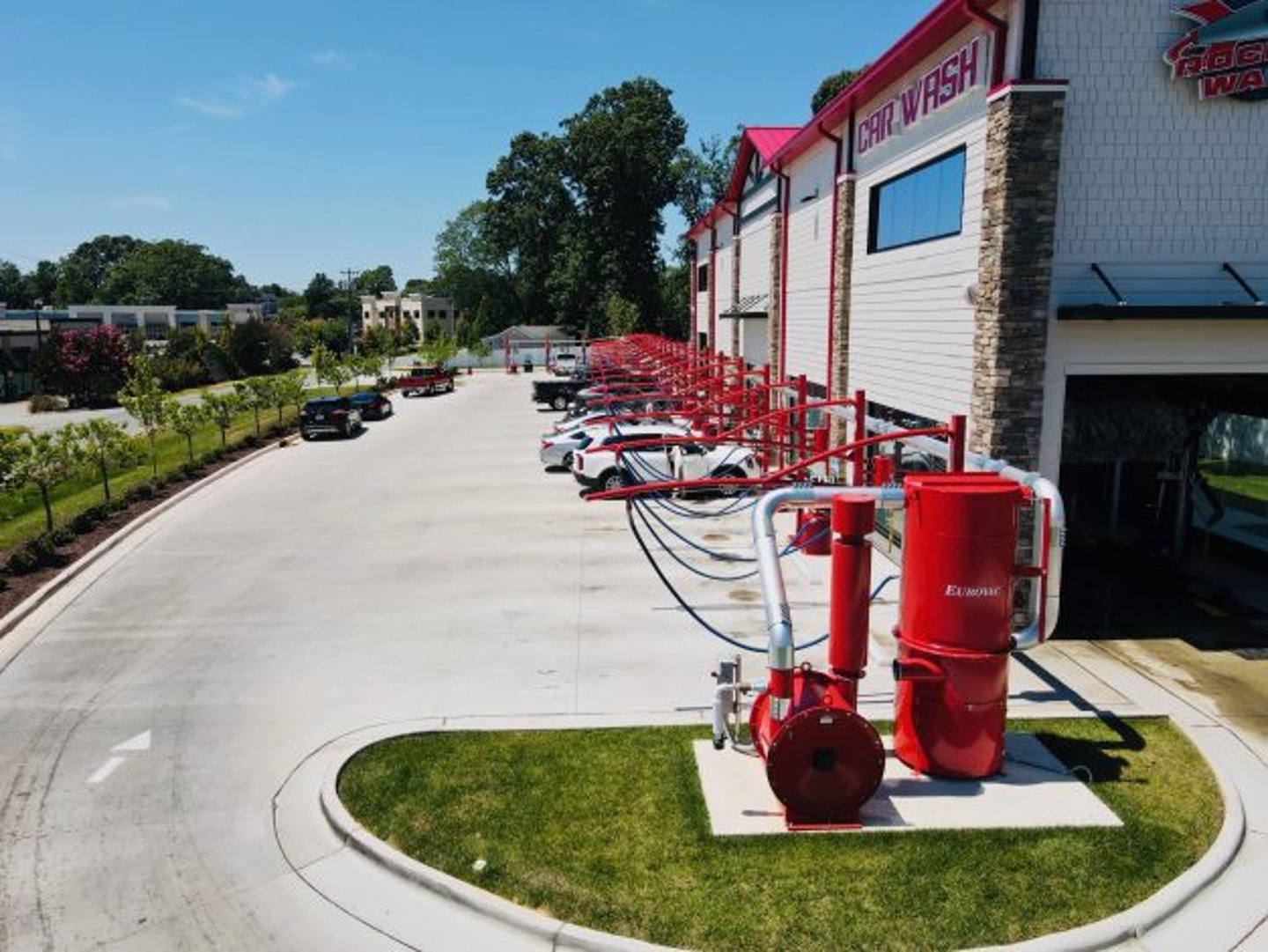Central or stand-alone? That is the question when it comes to car wash vacuums
Every car wash operation comes upon the day it must make a choice: what kind of vacuum system will it have? At its simplest, it is deciding between a central system or multiple stand-alone vacuums. Making that decision will rest on several factors.
Only before looking at those factors, let’s spend a moment looking at the differences between the two systems.
A central vacuum system is one where the multiple hose units connect to a large and centralized system and collector. All the hoses used by customers are in the same area, most often with designated parking spaces and sometimes under a colourful roof or awning to provide protection from the elements. The vacuum runs on a single, powerful motor—horsepower is dependent on how many users it is meant to support—and comes with a filter and collector unit for debris from the cars being vacuumed.
Stand-alone vacuums are single units sitting on top of their own island or pedestal. Each is operated by an individual motor to provide the needed suction to clean a vehicle and comes with its own bag and filter for easy cleaning.
Adam Thompson, sales representative with Eurovac, says that deciding between the two types of vacuum systems comes down to knowing your customers and then weighing what your customers want to the costs between the two types of vacuum technologies.
“You really have to look carefully at the overall business case between the two types of systems and base your decision on how many customers you have coming in per day, how many of those customers use or will use your vacuums and even looking at the location of where you want to put the vacuums.”
- Volume
For car wash operations with a high volume of daily customers, as well those who operate membership programs or offer car washes to fleet operations, a central vacuum system can be very attractive. The number of vacuum locations for customers can be scaled up, from five to 10 or more by simply adding more hoses and increasing the horsepower of the central motor—the more horsepower on the motor the more customers that can be accommodated. And the hoses and customer parking can be placed under an attractive well-lit awning to boost appeal and draw in customers.
As well, payment systems can be added to each vacuuming location so that customers with memberships can use their cards to activate the system or to make it easy for one-time or infrequent customers to pay for the use of the vacuum.
(It should be said that stand-alone vacuums can also be easily integrated with various membership or payment technologies, allowing people to pay with tap payments, credit cards or loyalty cards.)
A drawback is that you need a lot of real estate, especially if one is looking to have a lot of hoses with adequate parking. In a busy urban environment, this may not be possible.
- Space
So, if you have only space for say two or three places where customers can vacuum their vehicles after a wash, a stand-alone vacuum might be the best option, especially if, as Thompson points out, “you don’t have the room to put 10 spaces for a [central vacuum system], such as urban areas where property values are at a premium. Then those smaller, stand-alone systems will be more attractive and give your customers a way to vacuum their vehicles.”
- Cost
Cooper Jackson, inside sales representative with Coleman Hanna Carwash Systems, says that car wash operators need to also think about long-term operating and maintenance costs.
He says one of the obvious advantages of a central vacuum system is lower maintenance costs. “When it comes to the central vacuums, you only have a single collector and many filters inside and a single, large container to contain all the dirt and debris that gets cleaned out of the cars,” he says. “So, cleaning and maintaining them is easier.”
Ideally, maintenance is well timed and can be done quickly so the system is never down for long while employees empty the debris collector or clean and replace the filters.
The downside is electrical usage. Because a central vacuum system runs on a single motor, it can often be running all the time. “As you can imagine, if you have a 15-, 20-, 25-, and in some cases even a 30-horsepower central vacuum motor running all day long, they can pull a lot of electricity.”
Depending on where your car wash operates and what the local electrical rates are, that monthly electric bill could be quite large, even if the initial up-front cost of entry and overall maintenance costs for a central vacuum system may be lower than stand-alone systems.
When stand-alone vacuums are not being used, the motor is idle, which means the electrical usage and final monthly electric bill can be much lower. As well, if one has several stand-alone vacuums on site, if one is offline or in need of maintenance, customers can always use another.
- Energy efficiency
It should be said that central vacuum systems have improved greatly over the years. Upgraded filters, collectors and hoses extend the life and lower the maintenance cost to the car wash.
Eurovac’s Thompson adds that today’s central vacuum systems now come with variable frequency drives that when connected to a monitoring system senses how many customers are at the vacuum locations and can adjust the motor’s power. “It can thereby drop the performance of the motor if there are few people using the system, or it can speed the motor up if there is increased demand.”
This allows for more efficient energy usage and lower bills.
In the end, deciding what system is best for your car wash comes down, as in all other decisions, to knowing your customers, what you want now and where you want to be in the coming years.





